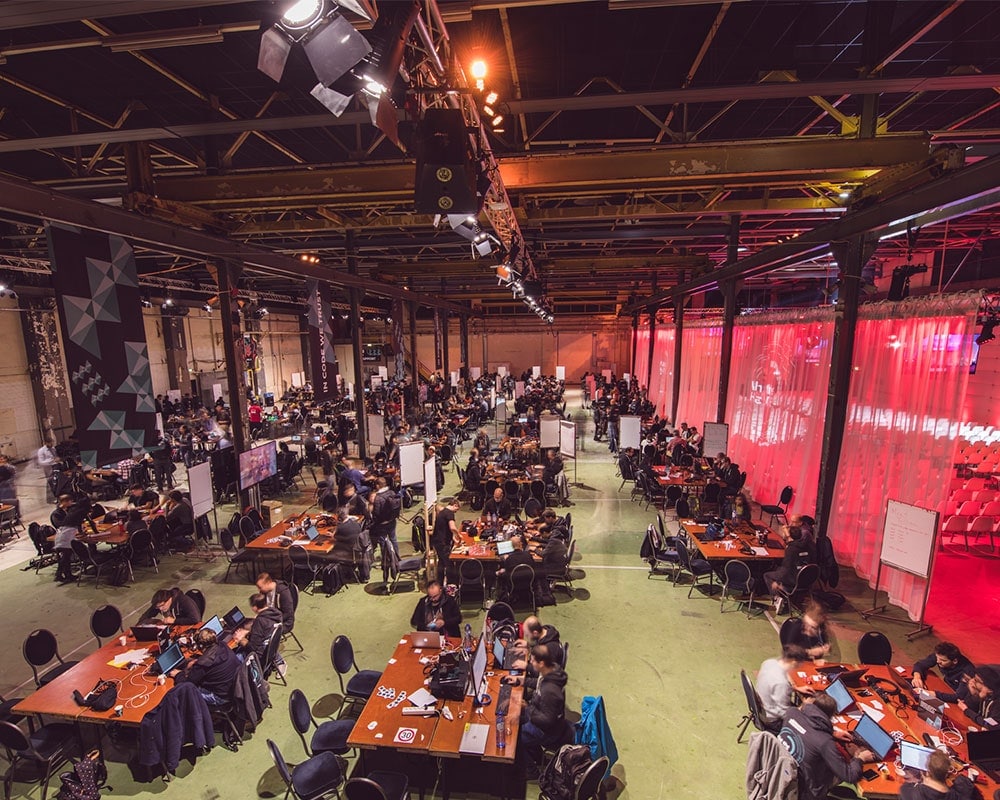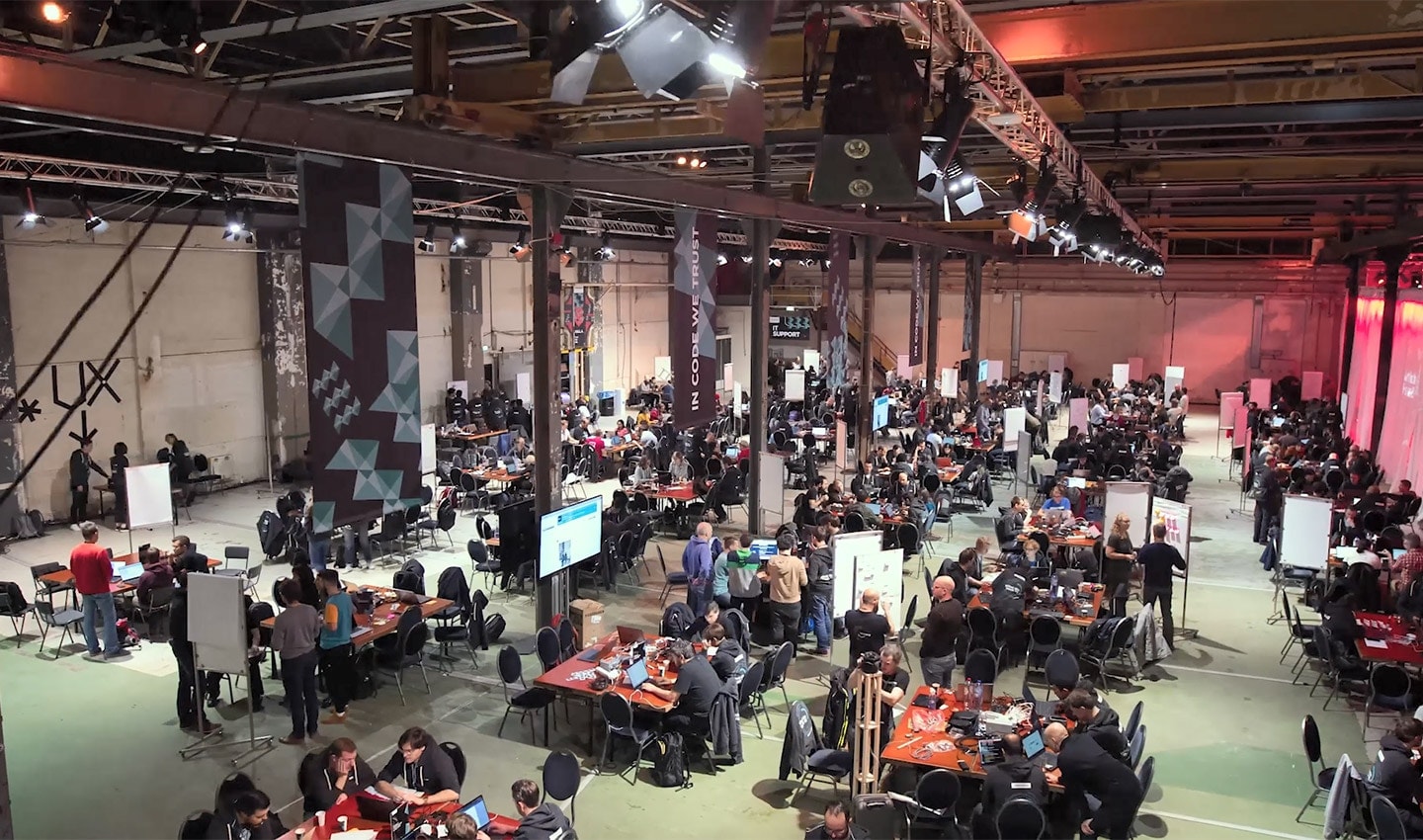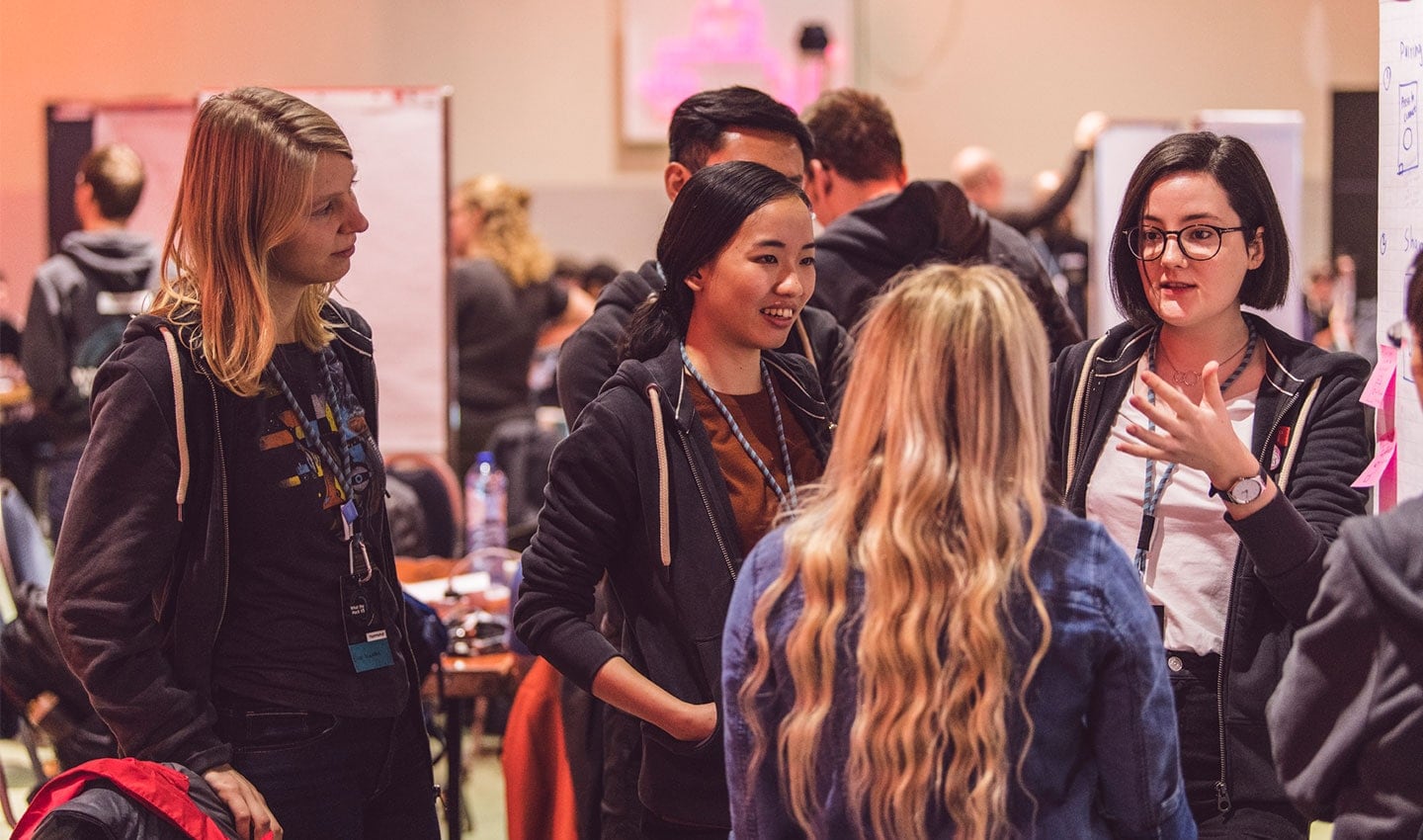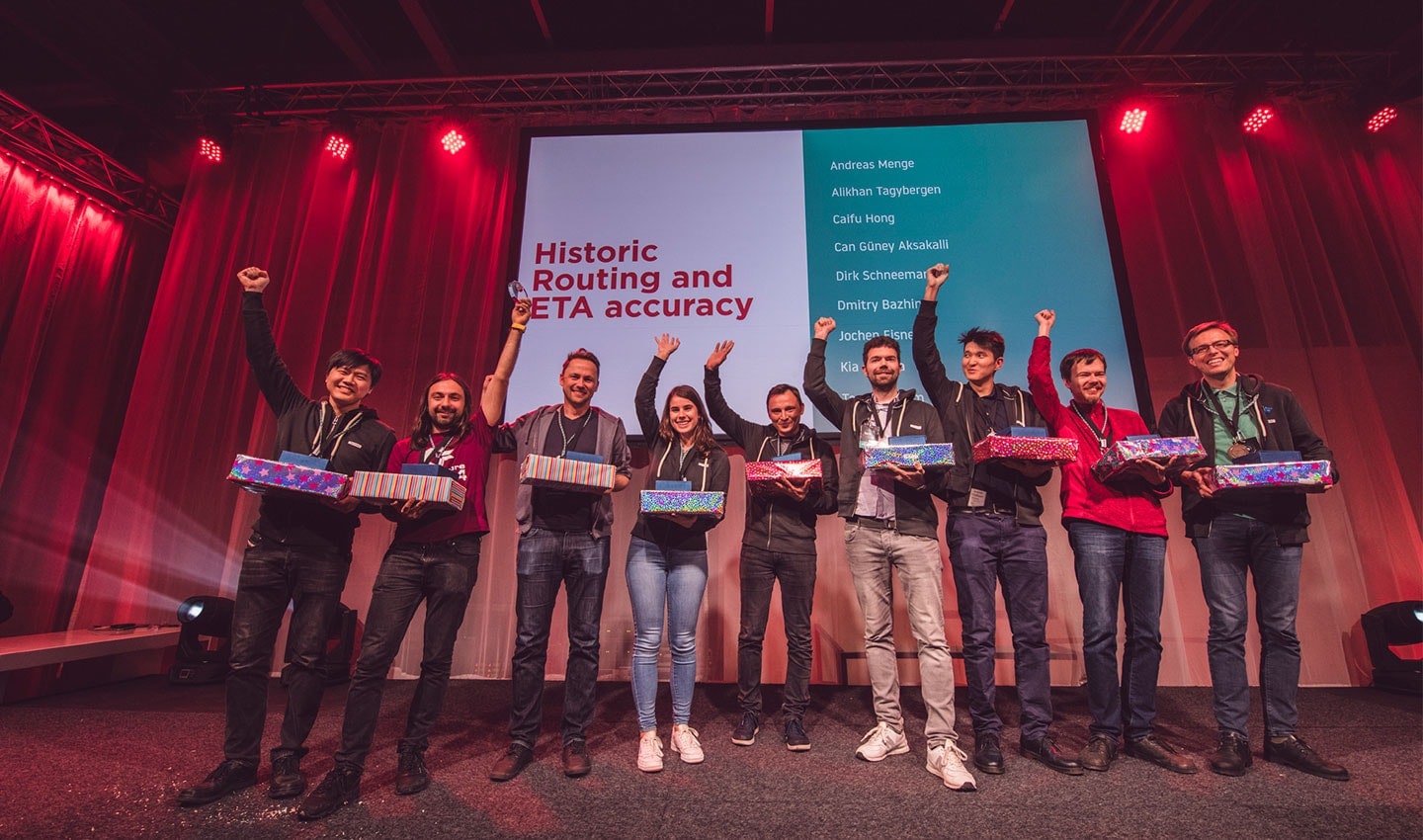
There is an effective way to taking a bottom-up approach to product innovation. For us, that’s the TomTom Lab.
On November 20, 2019, at midnight, 250 TomTom'ers were sitting in an event venue in Eindhoven, The Netherlands. They were focused on prototyping their proposals for product innovation and rehearsing their pitch for a 500-person crowd the next day. These people represent a 10% of TomTom, the fifth batch of What the Hack innovators, the first graduates of TomTom Lab — and creators of a host of innovative features that will be part of our future products.
I was there too, in this room that was silent as a library but brimming with concentration, among the brightest minds I have ever encountered — wondering how I ended up here. Let me explain.
How the TomTom Lab came to life
Every tech company is looking for THE recipe for innovation to stay ahead of their competition. TomTom is a leader in location and mapping technology, a market that is disrupted by digitalization, urbanization and climate change.
At the same time, Big Tech is moving in, the use of space in cities is renegotiated and eco-friendly means of transportation are on the rise. It is not a time to rest on one's laurels. Tech companies that are not able to keep up see themselves being overtaken by faster organizations, and see their developers leaving in droves. With the Lab, TomTom has found an answer for both.

Find out what the TomTom Lab is and why it works from Alex Kröller, Head of the TomTom Lab.
The TomTom Lab has evolved from a mixture of previous hackathons and other innovation programs. In the innovation portfolio, it covers the exploratory bottom-up quadrant. That's corporate lingo for "let people do whatever they want and hope something good comes out of it".
And good things are coming out of it: our recently released developer toolkit for electric mobility came out of an earlier program. As did the IFTTT integration for the TomTom GO Premium. In the first year, we invited engineers from a prospective customer, a German automaker, to join us. In just 24 hours of collaboration with TomTom'ers, they were able to integrate our solution with their vehicle — dissolving any doubt about our product and paving the way to one of TomTom's biggest deals.
How has the TomTom Lab achieved this? Let’s have a look at the recipe for success.
The TomTom Lab recipe
Slack time for employees
Nobody can think clearly while keeping too many balls in the air at the same time. TomTom decided to set aside nine days, organized as three separate events, throughout 2019 in which employees could stop working on their day jobs, and focus on specific innovations instead.
There were no approvals or checks on how employees were using the time. We deviated from swim lane formats ("spend x% of your time whenever"), because in a B2B context everyone's calendars are filled with their customers’ deadlines. That makes collaboration difficult, and having the same days everywhere overcomes it.A structured program
It is not advisable to control the content of ideas — after all, it's about leveraging the creativity of participants. Having said that, imposing an activity structure is fruitful, especially when 700 people are involved.
In the TomTom Lab, teams are iterating through two fast feedback cycles. They are free to spend their three days however they want, and by the end of the third day they can submit a documentation of their results.
Then, senior leaders, product managers, and other experts provide written feedback with numeric scores, so the outcome can be ranked. While taking this feedback into consideration is not a must, it is always helpful – especially when that feedback is positive and proves encouraging to the teams.
This sequence establishes an innovation funnel — great ideas survive, lesser ideas are either improved or abandoned. The best ideas are then invited to the annual finale – What the Hack – for a 24-hour hackathon ending with pitches and demonstrations in front of executives and product managers.
 A team works on their project during What the Hack V5.
A team works on their project during What the Hack V5.Well-rounded teams and ample support
Not everyone has the same skill level or breadth of experience in all aspects required for successful product innovation. In my experience, development skills are abundant in tech, but other skills are rare. To create the best conditions for end-to-end ideation, we encourage and support the formation of cross-skilled teams. This means developers, testers, product managers, UX designers all working together.
But sometimes, not all teams have all these disciplines represented so, to mitigate this, we started bringing in additional support in the form of pitch or lean innovation principles training. At the last edition of What the Hack, for example, product managers and a team of UX designers were available throughout the event to advise teams on the best solutions for their projects.So much fun participants won't notice they are working
This is a crucial bit, because we want to encourage a collaborative and relaxed atmosphere for people to come together and feel free to explore their ideas.

A participant works on his team project from the comfort of a beach chair during What the Hack V5.
Especially for the hackathon, TomTom goes over the top. We fly in 500 people from wherever they are, for a three-day onsite event, order the best food, organize an amazing party, bring in top-level executives and arrange everything around a central 24-hour hacking period.
It works. Here's why
Such an event not only results in new products being developed – that otherwise might not have seen the light of day – but also in a higher employee morale.
Ultimately, it's all about intrinsic motivation. Why should employees go through the ordeal of writing documentation ahead of deadlines and pull all-nighters? It's because they are exceptionally gifted people who want to excel, who want to be recognized for their work and who want to see their ideas live in products.

A participant is all smiles during What the Hack V5.
Because of this, for TomTom’ers, the TomTom Lab represents support, feedback, collaboration opportunities and chances to be recognized. There’s also a low barrier to entry — the only step being a selection process to decide which ideas get to be worked on during What the Hack.
Why it's worth to try it
Every company aims to give employees a chance to have their ideas heard. But achieving it is easier said than done. Sometimes it's just innovation theater — you can propose anything you want as long as it is what has already been decided.
Trying to get actual innovation out of such a program often leads to a dilemma: do we make it fun and engaging at the expense of real results or do we make it outcome-oriented with a clear focus on innovation, risking it becomes a dull corporate exercise?
At the TomTom Lab, we managed to find the sweet spot between being outcome-oriented and creating an engaging experience. Sitting in that big hall in Eindhoven, at midnight, watching TomTom'ers rehearse their 120-second pitch over and over, and afterwards hearing them claim to have had the best experience of their work-life, proves it.
 The winners of the What the Hack V5
The winners of the What the Hack V5Innovations are coming into our products that are the results of smart people doing what's right, because they believe in it. What more could you wish for?
Do you want to be part of the team that builds technology for a moving world?
Check out our global engineering positions.
People also read
)
Behind the map: how we keep our maps up to date
)
How to make HD maps better with AI: EL-GAN for lane detection
* Required field. By submitting your contact details to TomTom, you agree that we can contact you about marketing offers, newsletters, or to invite you to webinars and events. We could further personalize the content that you receive via cookies. You can unsubscribe at any time by the link included in our emails. Review our privacy policy. You can also browse our newsletter archive here.
)